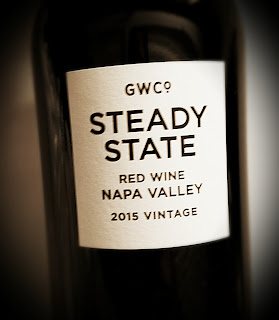Randall Grahm's
Bonny Doon Vineyard is a serious wine company. He's a serious winemaker who makes serious wines. His sense of humor, though, is not that of a dour, soulless number cruncher. I get the feeling he's had to do a lot more of that kind of work in his career than he'd like, but he doesn’t let it bring him doon.
Grahm is now making a pink, fizzy wine that comes in a can,
La Bulle-Moose de Cigare. He describes the Bulle-Moose as "pretty darn similar to our
Vin Gris de Cigare, apart from the fact that it has been carbonated and put up in cans with a slightly goofy label." It does look goofy, but the wine inside is seriously good.
The press material for this wine includes a reworked version of the "UFOs in the vineyards" tale that was embraced by Grahm years ago for his line of Cigare wines. It's also on the can. Grahm admits that his canned, fizzy pink wine is a bit of a stretch for him -- he’s used to much more serious "
vins de terroir." He says it's his tip of the hat to the realized fact that he's going to need some millennials hoisting his creations if the lights are to stay on at "chez doon."
Six Central Coast grape varieties made their way into these stylish cans, 57% Grenache, 18% Grenache Blanc, 9% Mourvèdre, 6% Roussanne, 5% Carignane and 5% Cinsault. That’s quite a Rhônish roundup. It was fermented in stainless steel, on the lees, stirred quite a bit and carbonated before bottling, er - canning. Alcohol is light enough for a picnic or outdoor festival at 13% abv and the wine retails for $8 a can, which contains a half bottle.
The wine -- from a can -- pours up frothy, retreating quickly to a nice frizzante status. The nose is beautiful and worthy of a picnic. Bright, fresh strawberry and cherry aromas dominate, with a touch of sage and earth. The flavors are ripe and sweet, with an earthy touch befitting a good rosé. Acidity is perfect, great for food pairing as well as sipping. The winemaker suggests you serve it very cold, and that will make it a great summertime wine.
Grahm puts tongue in cheek to recommend
La Bulle-Moose de Cigare be paired
with moossaka, moozarella crostini, moosseline de poisson, tarte au pamplemoose and chocolate moose.
Follow Randy Fuller on Twitter





















